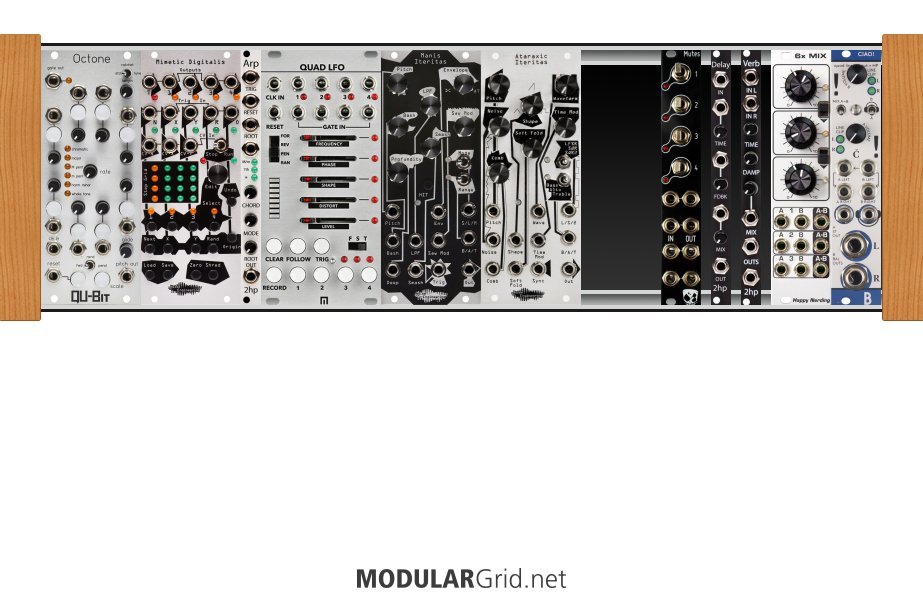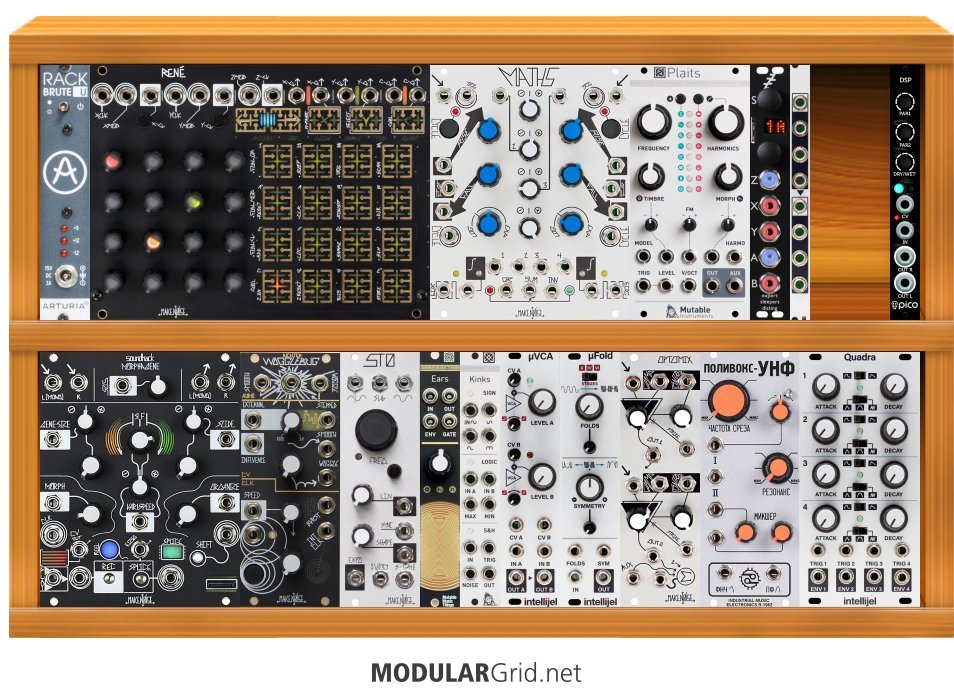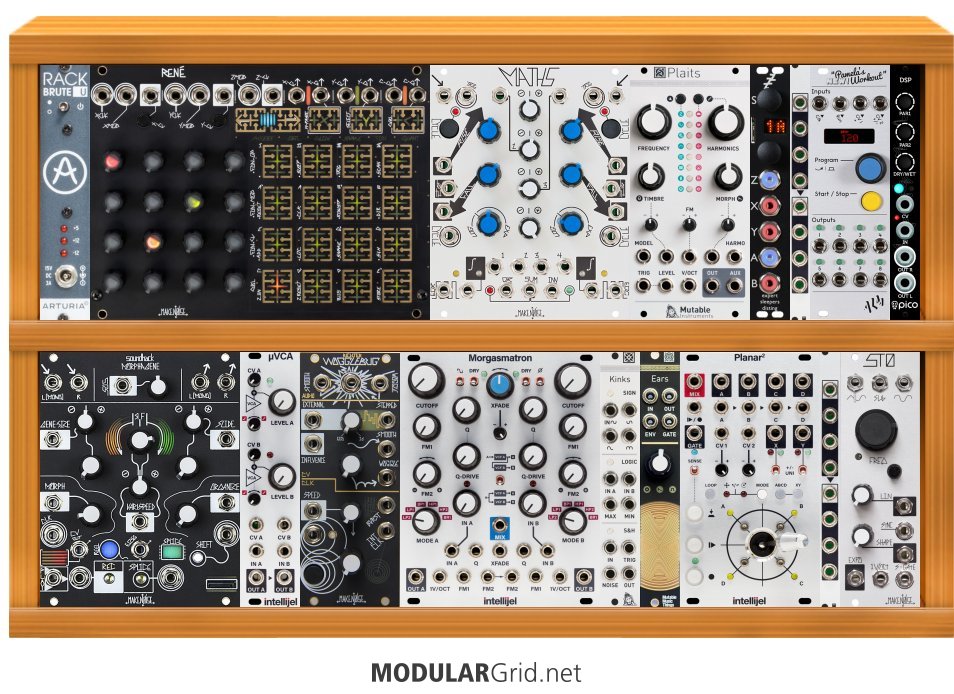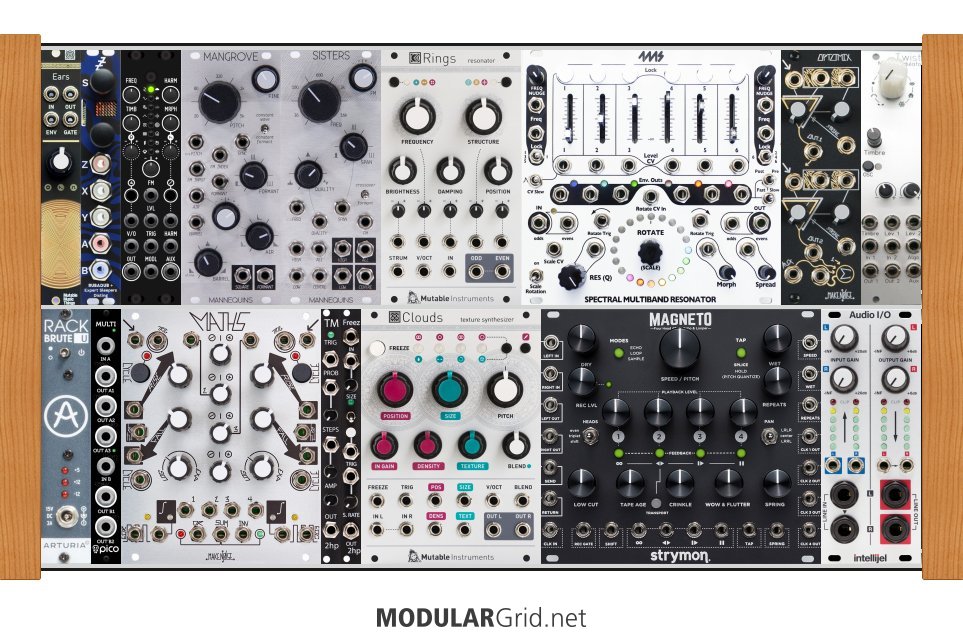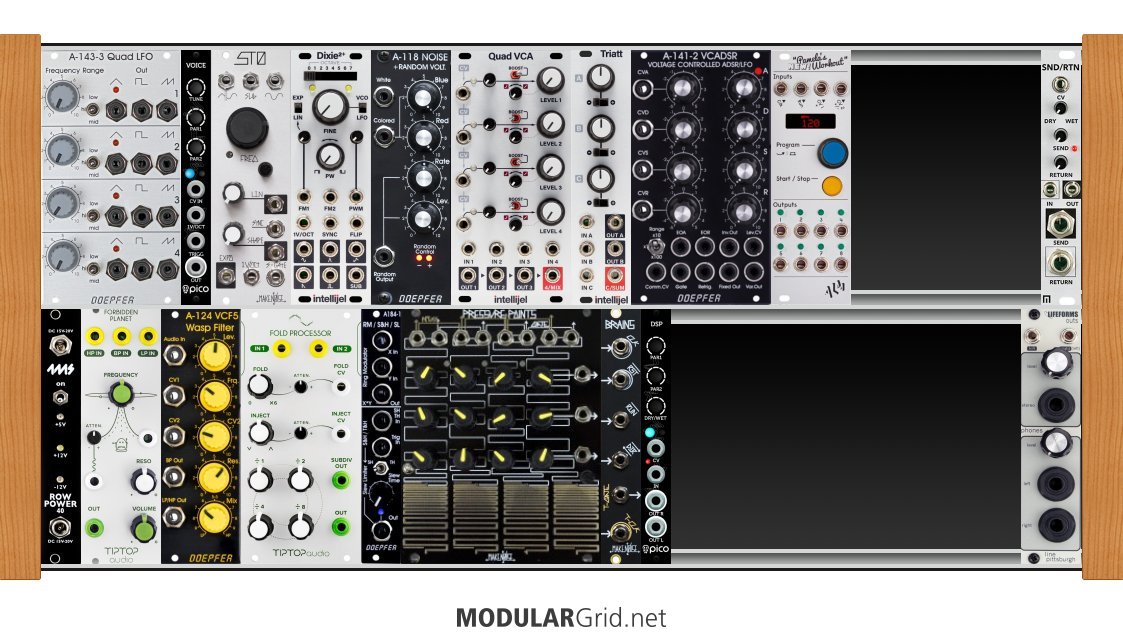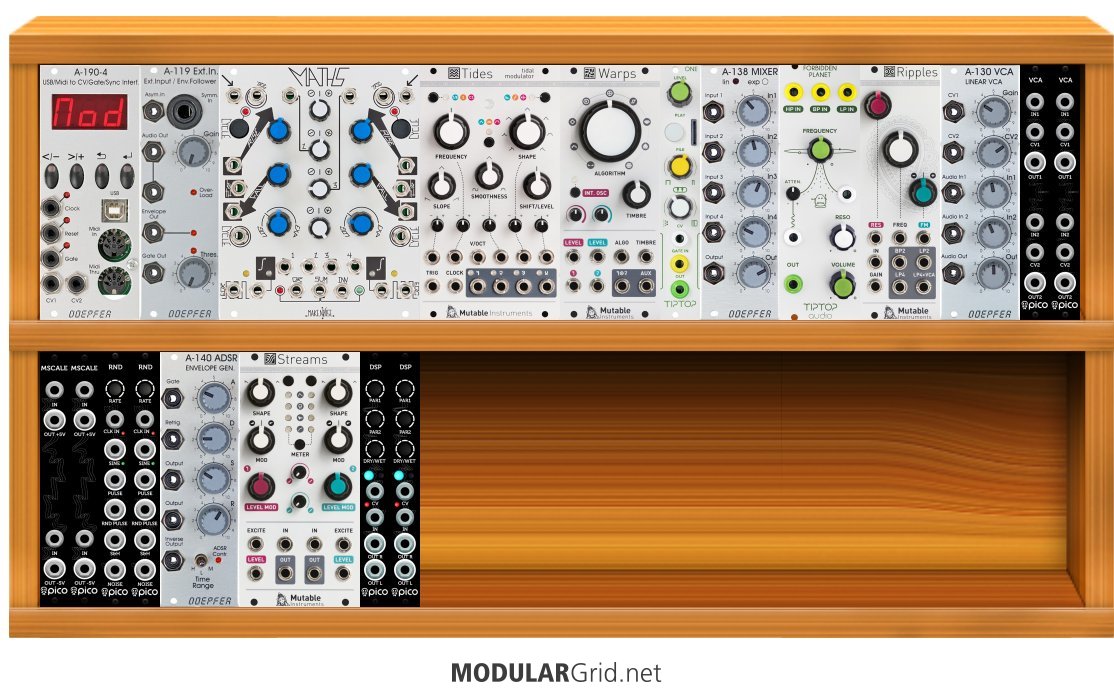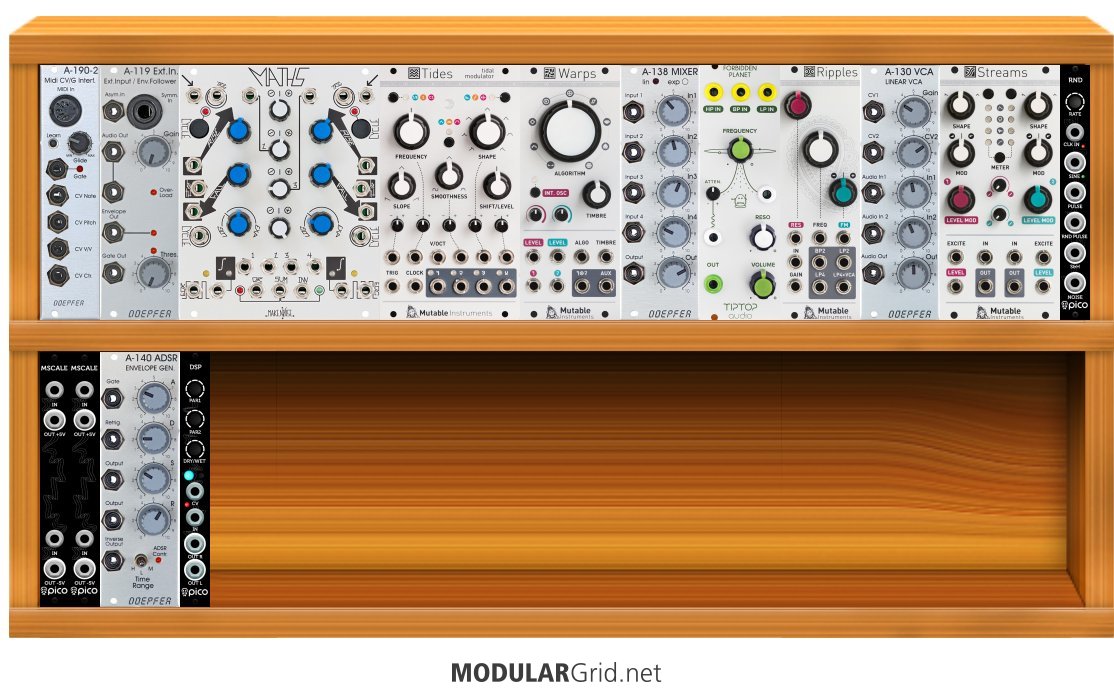I need a bit of help today and hope that some Eurorack wiz may have a good idea:
I am having trouble synchronizing my sequencers. I am using a Doepfer A-190-4 as a MIDI to CV clock and transport control interface. Clock works just fine, but transport is an issue. The Doepfer has a Reset out that responds with high voltage (constantly) to MIDI stop. My sequencers, on the other hand respond to voltage high as a clock reset or stop, so in a way the Doepfer does precisely the opposite of what I need it to do. I am using Rene MKII, Mimetic Digitalis, Pamela’s New Workout, and a Trigger Riot to sequence. I suppose I could use a logic module to put clock out only when no voltage is sent from the reset (advantage here: sequencing stops), but are there any better solutions? I’d have to get a suitable logic module with a NOT algo, so I might also consider an alternative MIDI to CV that is more suited to my needs.
Suggestions? Is there a way to solve the problem with what I have (includes a Deluge as master MIDI controller, which can put out clock and gate, and a Mutant Brain).
I guess I could just use a Gate and a CV output in the Deluge to directly send clock and Reset. The tricky thing is, that sending a reset via gate on end or start of sequence would hardwire a set cycle, which eliminates some of the neat abilities of the Trigger Riot. In fact, the Trigger Riot is causing me the most issues.
So, how does one send a single gate out only once upon a MIDI start signal?


